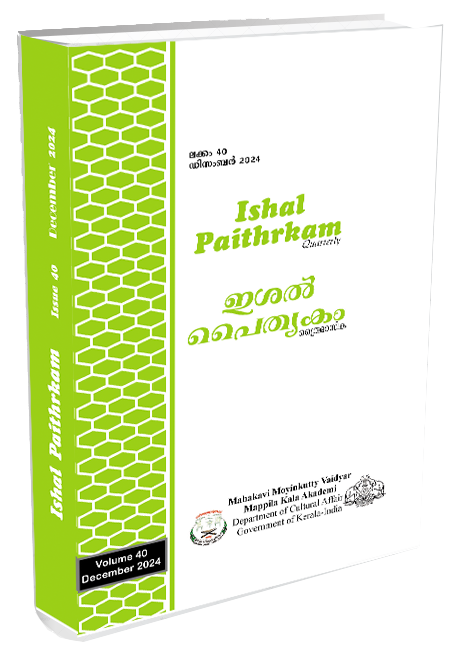Decolonising the Modest Dress: Intersectionality, Agency, and Choice in Diasporic Muslim Women’s Fiction
Keywords:
Muslim Women Fiction, Diasporic Writing, Modest Fashion, Sartoriality, IntersectionalityAbstract
This article explores the intersection of religion and modest dressing within the framework of intersectional feminist theory (Crenshaw 1998, Selod 2018) while reading diasporic fiction by Muslim women. It looks into how the protagonists in the novels The Girl in the Tangerine Scarf (2006) and Love in a Headscarf (2010) navigate agency and choice while adopting Islamic sartorial styles. Challenging the modernist premise which regard faith as a private act rather than explicit ritual practices or as reciprocated in faith-based clothing (Tarlo and Moors 2013, Asad 1997), the article expands the concept of ‘modesty’ (haya) beyond traditional fiqhi interpretations into the frame of modest dressing. Secondly, drawing from the works of Judith Butler (1999) and Saba Mahmood (2005), the article regards agency as embedded within power structures, moving beyond the binary of subordination and subversion. Thirdly, it builds on Miriam Cooke’s ‘multiple critique’ (2007) and Elizabeth Bucar’s ‘creative conformity’ (2011) to examine how characters negotiate religious and patriarchal norms while operating in a nuanced space between conformity and rebellion. The article situates Muslim women’s sartorial choices within the broader context of secularism, global fashion networks, and the political climate of Islamophobia, and looks into its impact upon intersectionality and the broader discourse of feminist studies.
Downloads
References
Bucar, E. M. (2011). Creative conformity: The Feminist Politics of U.S. Catholic and Iranian Shi’i women. Georgetown University Press.
Butler, J. (1999). Gender Trouble : Feminism and Subversion of Identity. Routledge.
Certeau, M. de. (1984). The practice of everyday life. vol. 1, the practice of Everyday Life. University of California Press.
Cooke, M. (2007). Women claim islam: Creating Islamic feminism through literature. Routledge.
Crenshaw, K. (1998a). Demarginalizing the intersection of race and sex: A black feminist critique of antidiscrimination doctrine, feminist theory, and antiracist politics. Feminism And Politics, 314–343. https://doi.org/10.1093/oso/9780198782063.003.0016
Janmohamed, S. Z. (2010a). Love in a headscarf Shelina Zahra Janmohamed. Beacon Press.
Khatibi, A. (1983). Maghreb Pluriel. Denoël.
King, D. K. (1988). Multiple jeopardy, multiple consciousness: The context of a black feminist ideology. Signs: Journal of Women in Culture and Society, 14(1), 42–72. https://doi.org/10.1086/494491
Mahmood, S. (2005a). Politics of piety: The Islamic Revival and the subject of feminism. Princeton University Press.
McCall, L. (2005a). The complexity of Intersectionality. Signs: Journal of Women in Culture and Society, 30(3), 1771–1800. https://doi.org/10.1086/426800
McClintock, A. (1995a). Imperial Leather: Race, gender, and sexuality in the colonial contest. Routledge.
Mill, J. S. (1869). The subjection of women. M.I.T.
Mohja, K. (2006). The girl in the tangerine scarf: A novel. Carroll & Graf.
Selod, S. (2018). Gendered racialization: Muslim American men and women’s encounters with racialized surveillance. Ethnic and Racial Studies, 42(4), 552–569. https://doi.org/10.1080/01419870.2018.1445870
Singh, J. (2015). Religious agency and the limits of intersectionality. Hypatia, 30(4), 657–674. https://doi.org/10.1111/hypa.12182
Wollstonecraft, M. (1891). A vindication of the rights of women: By Mary Wollstonecraft. with an introduction by Elizabeth Robins Pennell. Walter Scott.
Downloads
Published
Issue
Section
License
Copyright (c) 2025 ISHAL PAITHRKAM

This work is licensed under a Creative Commons Attribution-NoDerivatives 4.0 International License.

